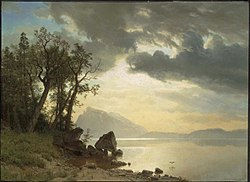Antiquated Hicksville Cemetery
- Cheryl Anne Stapp

- Oct 12, 2022
- 3 min read

In October we start thinking about trick-or-treaters, and making plans to deck our porches with jack-o-lanterns and other Halloween frills. Some people put up extravagant lawn displays featuring creepy polyfoam tombstones, with nonsensical sentiments for the occasion. But real headstones, especially the ones in antiquated cemeteries, are often engraved with epitaphs that tell something of the deceased’s roles, interests and values; brief, though timeless, stories of what life was like in days long past.
For example, the markers at Hicksville Cemetery, a graveyard named for William “Billy” Hicks and the now-defunct town of Hicksville that he founded in the 1840s, near present-day Galt. Scattered about these three acres are headstones with inscriptions attesting to the lives of hardy pioneers who endured terrific hardships and heartaches. A large number of graves are those of children who died too young. The tombstone of fifteen-month-old William Frazer bears the poignant words of his bereaved parents:
Those little hands thou wilt raise no more to meet my loving fond caress.
For death’s cold blast . . . has snatched thee from affection’s breast.
Billy Hicks, in fact, buried his own newborn child here.
Tennessee-born William Hicks was about 26 when he entered California at the southern end of the Sierra Nevada on December 3, 1843, with the Chiles-Walker Party. Low provisions had forced this company, composed of married men with families, and a larger number of unmarried men, to split in southeastern Idaho. Joseph Chiles took twelve single men to ride ahead to Sutter’s Fort for help. Hicks was one of the single men who, along with the husbands, stayed with the wagons to provide labor and protection for the women and children, as Joe Walker led them southward through Nevada to a pass he had discovered nine years earlier.
In 1846, Hicks acquired a Mexican land grant south of the Cosumnes River. Despite his disability—a withered arm and leg—Billy Hicks was a skillful horseman and a tireless worker in establishing his cattle ranch. He married Susannah Patterson in 1848, but soon after giving birth, she and their baby daughter died of cholera. Wife and child are thought to be the first white burials here; unfortunately the elements have obliterated all trace of their graves. It is also believed that Native Americans had been burying their dead nearby for some time.
About 1852, Billy Hicks married Sarah Davis Wilson, a widow; and over a relatively short period of time amassed a land empire spread over several counties. He founded the town of Hicksville, housing the post office in his own home from 1854 to 1857. William Hicks died in 1884 at his home in Hicksville, a wealthy land and cattle baron known affectionately as “Uncle Billy.” Hicksville dissolved in 1889 when the Central Pacific Railroad made Galt its headquarters between Lodi and Sacramento.
Meanwhile, over the years William Hicks had deeded parts of his land grant to other settlers, and the private graveyard became a community cemetery. The earliest recorded burial is that of Louie Davis in 1857, the infant son of David and Elizabeth Davis. One of Hicks’ land-owner successors, Pio Valensin, promised his friend Aleck Blue, a Miwok Indian, that Blue and his descendants could be buried in Hicksville Cemetery. A later owner deeded the site to the Methodist-Episcopal Church in 1897, which administered the cemetery for many years. The church building, which no longer exists, is believed to have been located near the Davis family plot, which also holds the graves of two other Davis children who died before they were five.
After Galt became the main population center, the church at the graveyard closed, and the cemetery gradually decayed into a shabby parcel overrun with weeds. In 1952, the Community Methodist Church transferred the deed to Sacramento County, which established the Galt-Arno Cemetery District that year. Problems arose when the absence of written documents led to a dispute between the new District and Native Americans, who—based on claims of their sacred ancestral burying grounds, and the promises of Pio Valensin—asserted their right to be buried in Hicksville Cemetery. These disputes were finally settled in 2013.
Today the restored Hicksville Cemetery grounds, open for new burials, is divided into two sections. The east side contains the remains of the descendants of Aleck Blue, and other Native Americans, from the 1800s to modern times. The west side contains the final resting places of European-Americans--19th century pioneers, and more recent interments.




Comments